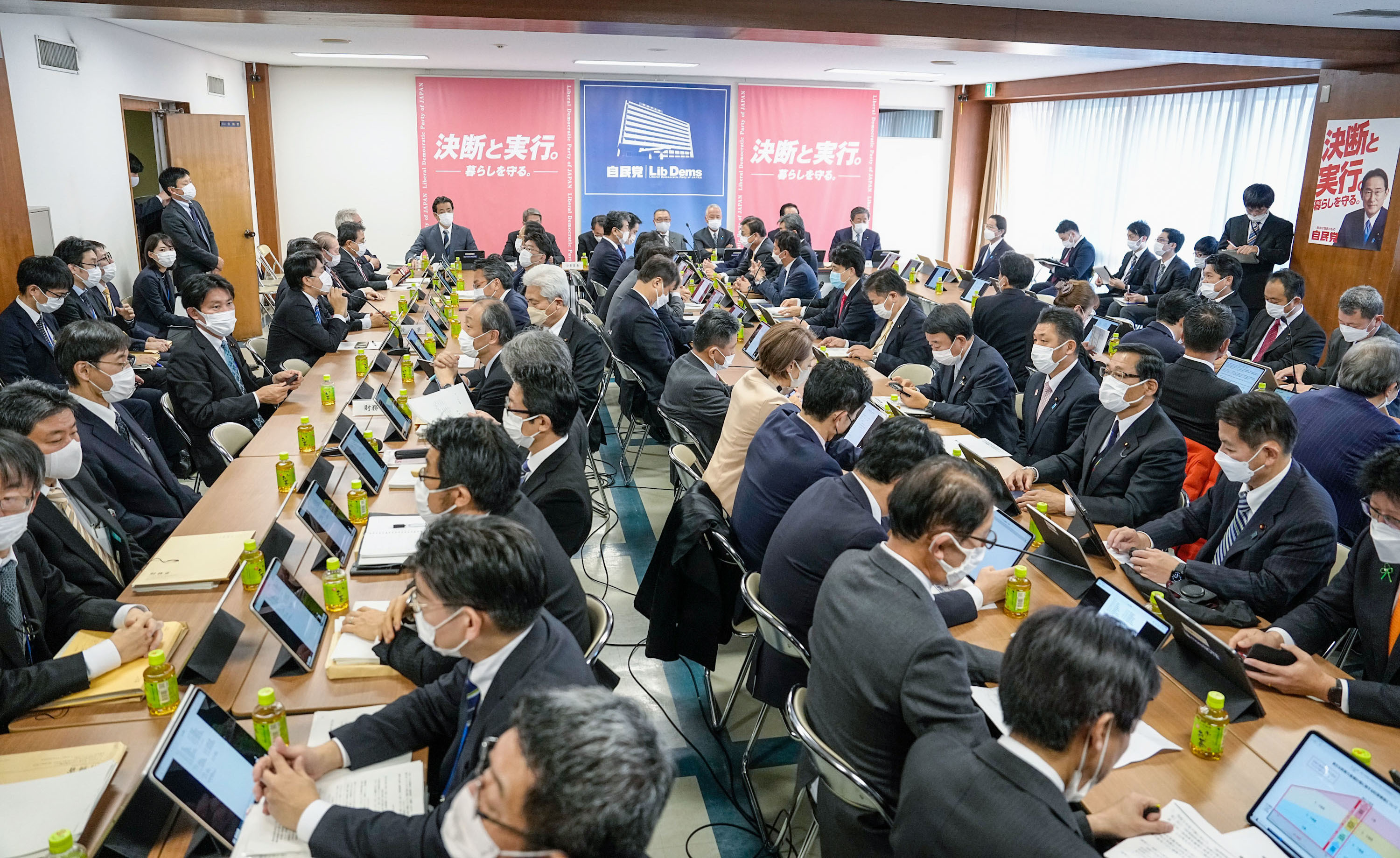
- Article
- Tax & Social Security Reform
A Proposal for Lifetime Income Taxation: The Vickrey Mechanism Revisited
June 24, 2021
Abstract
This paper proposes a new scheme for personal income taxation that taxes lifetime, not annual income, through a reformulation of Vickrey’s income averaging. Lifetime income taxation contributes to redistribution according to lifelong ability to pay while ensuring horizontal equity among taxpayers with equal lifetime income, irrespective of income generation patterns. It can also play an insurance role, as high income in one year will be leveled with a decrease in income (or deficit) in the event of a disaster. Moreover, unlike annual income taxation, there will be no incentive to delay the “realization” of income, so lifetime income taxation is neutral with regard to type of income, such as capital gains, stock options, and retirement allowances.
KEYWORDS
Lifetime income taxation, horizontal equity, progressive taxation, insurance, tax deferral
JEL Classification: H20, H24
Introduction
The spread of COVID-19 has revealed deficiencies in existing safety nets. The ILO (2021) estimates that global labor income (before income support measures) in 2020 declined by 8.3% to $3.7 trillion or 4.4% of global GDP. The OECD (2020) reports that the economic consequences of the COVID-19 pandemic have fallen unevenly on workers, with lower paid and part-time workers and the self-employed being more exposed to income losses. In the United Kingdom, 75% of the self-employed reported having experienced a drop in earnings, compared to less than 25% of salaried workers. In normal times, they would have been independent and supported the economy. Therefore, without adequate and effective support for them in times of emergency, the economy cannot be expected to recover once the crisis is over. The government has sought to expand assistance for sole proprietors, but this has remained ad hoc. On the other hand, the economic and social environment is changing drastically with the progress of globalization and digitalization. There has been an increase in the number of workers with unstable income, such as freelance and gig workers. Along with redistribution to reduce the income gap, the role of income tax as insurance has become more important than ever. A new tax system will be required and needs to be put in place for this new economic and social environment. In the case of corporate tax, companies are permitted to carry forward or carry back losses on the premise of a going concern that corporate activities will continue into the future. Corporate tax can thus be levied at a flat rate on the present value of future profits.
This paper proposes to introduce a similar mechanism for personal income tax, changing annual income taxation to lifetime income taxation while preserving progressivity. Note that while the form of taxation proposed in this paper is different from basic income, which ensures the same income for all, it nonetheless serves as insurance to stabilize disposable income. In social insurance programs, such as unemployment and pension benefits, a history of previous earnings is reflected, and in this regard, these benefits are based on lifetime earnings. I aim to incorporate the lifetime perspective into personal income tax. In the present personal income tax system, the ability to pay is measured according to annual income. However, taxpayers who have earned a high income in the current year due to the listing of stocks and/or the realization of capital gains will not necessarily continue to gain high income in subsequent years. In economics, it is an individual’s welfare level that determines their ability to pay, which depends on their lifetime income. Although value-added tax (VAT) is criticized for being regressive from an annual income perspective, on a lifetime basis, it is a tax equivalent to lifetime income taxation so that the economic effect is the same. Therefore, the lifetime incidence of VAT can be measured quite differently from annual VAT (Casperson and Meltdalf 1994). VAT is known to be advantageous in raising revenue, but it has a limited redistribution function. A progressive tax on lifetime income, on the other hand, can also serve as a progressive consumption tax from a lifetime perspective.
Related to lifetime income taxation, the averaging of income for tax purposes was introduced in the United States from 1964 to 1986 and Canada from 1972 to 1988; the averaging was not over a full lifespan but limited to a certain number of years. The formula for averaging personal incomes in Canada is contained in Davies (1975).[1]Because of the administrative burden of managing income information, it was abolished to simplify the tax system. However, with the recent advances in digital technology, lifetime income taxation has become possible without compromising simplicity. Jacobs (2017) discusses the possibility of lifelong income taxation in the light of the development of digital technology. As a part of renovating the Canadian income tax system, Boadway (2019) proposes that general income averaging be re-instituted given that the Canadian tax-transfer system has become less effective in mitigating market-induced income volatility. A potential objection may be that the value of income averaging is not great given that personal income taxes have been less progressive with smaller differences in marginal tax rates. Progressive taxation may have been constrained, however, by considerations that annual income taxation imposes higher burdens on taxpayers with lumpy and fluctuating incomes. Indeed, there is empirical evidence that household income has become increasingly volatile. Moffitt and Zhang (2018) review major papers that study income volatility using PSID in the United States. Gordon and Wen (2017) provide an extensive survey of the experience of averaging income taxation and examine its effects. Their findings are that while welfare gains from averaging is generally low, it can be high for high-income earners. Batchelder (2003) proposes income averaging that targets low-income families by averaging the earned income tax credit (EITC) over a two-year period, given that they tend to experience higher income volatility than middle- and high-income households.
Vickrey (1939) proposed the averaging of income for tax purposes. My proposal is based on his pioneering work. Income tax averaging and lifetime income tax differ, however, in their treatment of normal returns on savings. As noted above, the latter is effectively a tax on consumption, whereas the former can encompass comprehensive income taxation. In addition, income averaging applies to a certain number of tax years, five years for instance, and thus is shorter than a lifetime. Steinerberger and Tsyvinski (2020) have formulated axioms of income tax averaging. They account for general weights on income, whereas the present study calculates lifetime income using an arithmetic average. Lifetime income taxation may be supported from the viewpoint of optimal taxation theory, in that it is desirable to utilize past income information to deal with informational asymmetry (Golosov et al. 2011). Erosa and Gervais (2002) modeled optimal taxation in a standard overlapping generation setting with both wage and capital taxes being levied on an annual basis while allowing for age dependence. I propose that lifetime income tax can enhance the insurance function. In a related vein, Varian (1980) examined optimal income tax as insurance in the presence of income uncertainty. His work has been extended by Chetty and Saez (2008), who have incorporated the private insurance market. Stepner (2019) finds evidence that the progressive shape of taxes and transfers (on an annual income basis) provides the majority of social insurance against such risks as layoffs and hospitalization using the Canadian tax record. Bovenberg and Sorensen (2006) studied optimal lifetime income taxation and social insurance in which compensation for the loss of earning capacity depends on previous labor income. Lifetime taxation can serve to remove the incentive of tax deferral. Auerbach (1991) and Auerbach and Bradford (2004) have proposed capital income taxation that can be neutral with respect to the realization of capital gains. Their tax structure is flat, although the tax rates can be dependent on holding periods, whereas the present paper considers progressive taxation.
The remainder of this paper is organized as follows. Section 2 addresses deficiencies in current year income taxation. A lifetime income tax is proposed in Section 3, assuming a zero-interest rate for simplicity. A more general form of lifetime income tax is presented in Section 4. Section 5 provides some concluding remarks. The formal model is given in the Appendix to consider the incentive effect of lifetime income taxation.
[1] In 1949, after World War II, the Shoup Mission proposed a fundamental tax reform for Japan and recommended a special provision for fluctuating income, such as capital gains, by averaging the tax burden over several years (Shoup1949); however, income averaging was never fully implemented. Vickrey was a member of the Shoup mission and was in charge of personal income tax reform.
Download the full paper (PDF: 532 KB)


